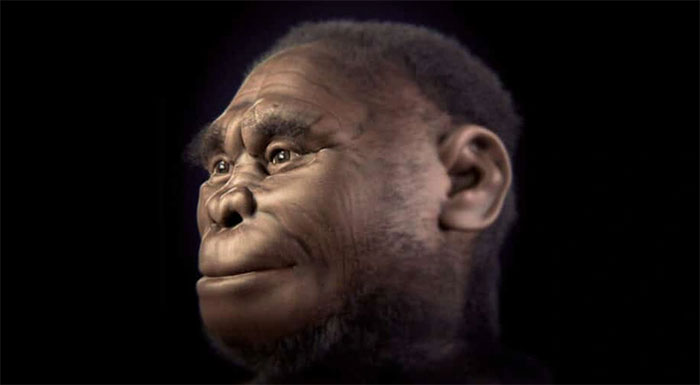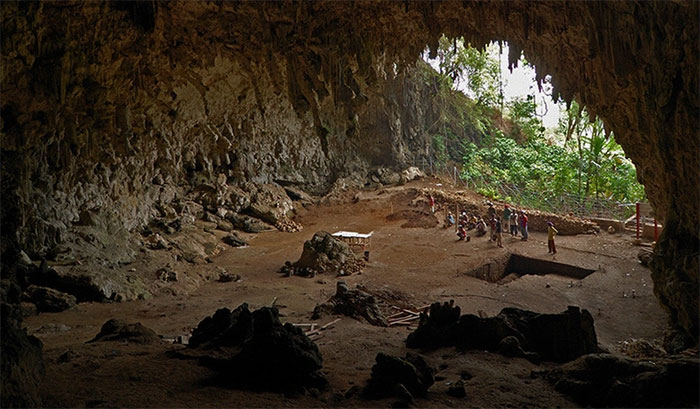Hominids that lived about 18,000 years ago may still exist
People living on the island of Flores (Indonesia) are believed to have seen individuals of the Hominids, leading to the possibility that they still exist today.
Homo floresiensis is characterized by a short height of about 1-1.1 meters, individuals of this species are sometimes referred to by the term "hobbits".

Homo floresiensis, also known as Men of Flores, belongs to the species of Hominids in the genus Homo that lived about 18,000 years ago on the island of Flores (Indonesia).
Homo floresiensis fossils, dating from the Pleistocene, were discovered and excavated by an Australian team of experts led by the late archaeologist Mike Morwood in 2003 in the Liang Bua cave, on Flores Island.
By dating the bones, the results showed that this species became extinct shortly after a war for resources with Homo sapiens.
Based on accounts of "human-like" creatures seen by the Lio people on the island of Flores, ethnographer Gregory Forth believes that members of the Hominids may still exist today.
In a book called Between Ape and Human, to be published, Greorgy Forth writes: "My goal in writing this book was to find a logical explanation. most of the stories told by the people of Lio to human-like creatures".
Creatures that go into myths
Small "Hobbits", resembling Australopithecines or chimpanzees, possess an appearance that can match sightings of the Lioites.
Greorgy Forth spoke with more than thirty eyewitnesses who are said to have seen individuals of Hominids before concluding that the species could have survived on Flores to this day or at least less than a year ago. a century.

Hominids fossil excavation site in a cave on Flores island in Indonesia
An earlier book titled: "Images of Wild People in Southeast Asia: An Anthropological Perspective", published in 2012, the author mentioned the Ebu Gogo, a group of human-like creatures that are part of the Ebu Gogo. folklore in the island of Flores.
These mythical creatures may indeed have been inspired by actual encounters between modern humans and hobbits, he argues.
The book's author points out, Lio folklore includes people who have the ability to transform into animals of different species "by moving to new environments and adopting new ways of life".
This is very similar to the illustration of Lamarck theory - an evolutionary theory proposed by the French naturalist, Jean-Baptiste de Lamarck in 1809, that a change in habitat leads to a change in needs, habits and organs, body appearance.
Based on her fieldwork, anthropologist Forth believes this myth may suggest a link between modern humans and hobbit ancestors. As for the people of Lio, these "apes" belonged to the animal kingdom rather than the human race.
Indigenous stories will shed light on human evolution
The Lio people are an illiterate people and without access to modern technology, they distinguish humans from animals in not the same way as we do.
Thus, for the Lios, the "ape-man" appearance as something not quite like modern humans, resulted in individuals of Homo floresiensis becoming unusual for them.

The image recreates what the Hobbits looked like in their lives.
The existence of the Hobbits has raised many questions among experts, especially because the species appears relatively late in the geological record and is thought to have coexisted with modern humans.
Forth ethnographer Mike Morwood himself argued for the inclusion of Hobbits in the Hominids for the simple reason that their existence was relatively recent, based on fossil evidence.
After examining the Lio accounts, Gregory Forth said he found no good reason to think they were mere fiction.
- The girl who lived in a cave for 130 days to prove time does not exist, the results shocked scientists!
- Two million years ago, a dish turned hominids into humans?
- Argentina: Discovering the footprint of an animal that lived 15,000 years ago
- People lived in the Thames River 9000 years ago
- China found fossils of sea monsters that lived before dinosaurs
- The secret dish of the world's longest-lived family
- Who lived 13,600 years ago, the oldest in America looked like this?
- Dress up the face of Peruvian nobles who lived 1,200 years ago
- Will there exist aliens?
- The strange tribe refused civilization, lived like ten thousand years ago
- Today's whales migrate with the same path their ancestors lived 270,000 years ago!
- Found the ancient elephant remains that lived 3 million years ago
 Discovered an ancient centipede fossil 99 million years old
Discovered an ancient centipede fossil 99 million years old Discovered bat-like dinosaurs in China
Discovered bat-like dinosaurs in China Discovered a 200-year-old bronze cannon of the coast
Discovered a 200-year-old bronze cannon of the coast Discover 305 million-year-old spider fossils
Discover 305 million-year-old spider fossils